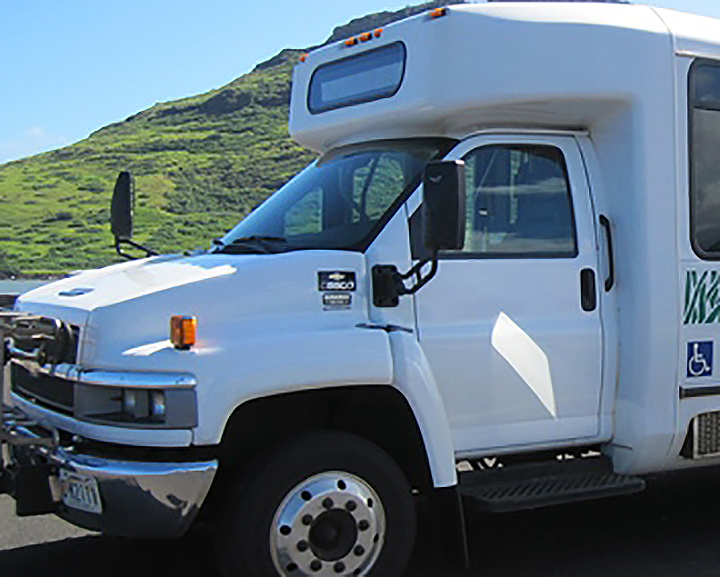As a co-op, we support measures our members can take to save money and become more energy efficient.
We also want our members to make informed decisions about their energy use. With rooftop solar photovoltaic systems being sold so aggressively on Kauaʻi, we’re already seeing situations where people aren’t getting the savings they were promised. So now they’re paying a KIUC bill and making monthly payments on a solar lease.
There are also people who use very little electricity who are being talked into long-term leases for big rooftop systems. In some cases, their lease payments can be more than their old electric bill.
Rooftop solar isn’t right for everyone, so it’s important that you get all the facts before buying a system or committing to a lease.
If you do decide to get a rooftop system, we recommend getting one that’s right-sized for the amount of electricity your household uses, not oversized. The bigger the system, the higher the cost. And there’s no guarantee KIUC will always buy your excess power.
Here are the co-op’s answers to some common questions about rooftop solar:
Should I get a rooftop solar system?
It mostly depends on how your household uses electricity. To maximize your savings, your household must be able to shift a significant amount of its electricity use to the hours when the sun is shining – doing laundry or cooking during the day, for example. If no one is home during the day and your energy use during those hours is minimal, your savings will also be small.
What size should my system be?
Every household uses electricity differently, but the average household using 500 to 700 kilowatt hours per month can usually achieve savings with a 10-panel system producing 2.5 kilowatts. For people using less than 500 kWh per month, the savings probably aren’t big enough to justify the cost of rooftop solar. You should first consider a solar water heater, which is a lot less expensive to install and can reduce your bill by 30 percent or more – and KIUC offers a $1,000 rebate. You can call us at 246-4300 and we’ll tell you what your average use is.
How many panels do I need to make my bill go away?
Even customers who offset all of their household use are still responsible for a minimum monthly charge. An oversized system designed mainly to sell excess electricity to KIUC can cost $40,000 or more before tax incentives – the bigger the system, the longer it takes to recover your investment, if ever.
Those zero-down leases sound like a great way to get solar on my roof
With zero money down, you’re rolling the cost into the monthly payment you’ll be making to the solar company, which charges you for the electricity your system produces. Before signing a long-term lease, ask yourself some questions: Do I plan to live here for 20 years or am I going to move? Am I comfortable with the risk that if the price of electricity falls, I’m still locked into a higher lease payment? Can I shift my use of electricity to the daytime? What kind of warranty does the contractor provide, and who will be around to repair my system if it breaks 10 years from now?
How much will KIUC pay me for the excess electricity I generate?
For most members with rooftop solar, the amount KIUC pays for the electricity they export to the grid changes every month, depending on the price of oil. It’s been as high as 26 cents and as low as 10 cents. This rate, known as Schedule Q, reflects the amount KIUC would have had to pay to generate the power if we didn’t buy it from you. Because KIUC generates most of its electricity by burning oil, this so-called “avoided cost” calculation is tied to the oil price. As more renewables come on line and KIUC burns less oil, the amount paid under Schedule Q is expected to drop.
Will KIUC always buy the extra energy my system produces?
On a sunny afternoon when all of the photovoltaic systems on the island are at their maximum output, there can be more power being generated than there is demand – there’s nowhere for this excess power to go. So there may be times when our system won’t accept all of the solar power available. That’s known as curtailment. The more oversized rooftop systems on the grid, the more likely curtailment becomes. KIUC hopes to avoid curtailment by encouraging customers to install “right-sized” systems. At times when peak solar production outpaces demand, it’s possible KIUC may temporarily disconnect some oversized systems so they can’t export to the grid.
Will the charges on my electric bill stay the same if I have solar?
People with solar photovoltaic systems are still on the grid. They count on it to provide 80 percent of their power, since those systems don’t work at night and when it’s cloudy. Yet they pay a smaller share of the utility’s fixed costs – people, poles, lines, power plants, batteries – than people without solar. Regulators have acknowledged that existing rate mechanisms don’t reflect the new reality of renewable resource integration. Some Mainland utilities are starting to charge solar customers a fee to help recover their share of fixed costs and Hawai`i utilities, including KIUC, are studying similar fees. Any rate changes would be subject to the approval of the Hawai`i Public Utilities Commission.
Discover more from ForKauaiOnline
Subscribe to get the latest posts sent to your email.







Leave a Reply